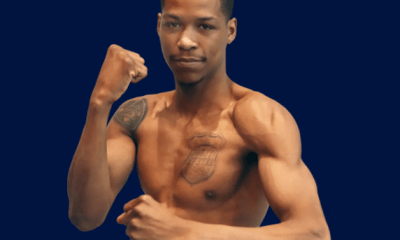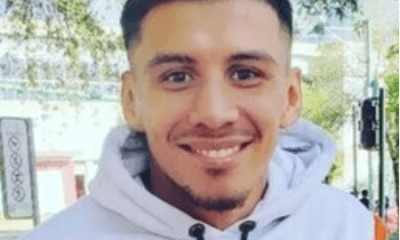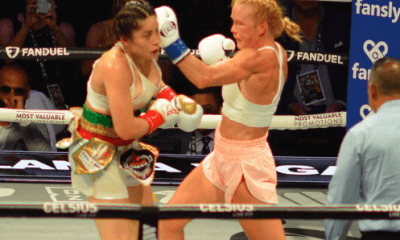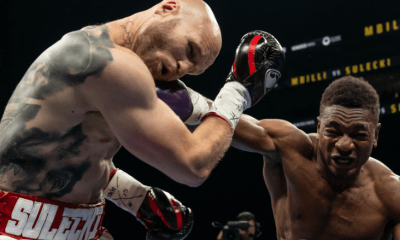Canada and USA
The Fifty Greatest Bantamweights of All Time: Part Two, 40-31
Most fascinating to me about Part Two is the rude intrusion of no fewer than four great flyweights into the bantamweight mix.
At first, I was surprised, and even a little alarmed by this, as though their grouping was part of some unconscious
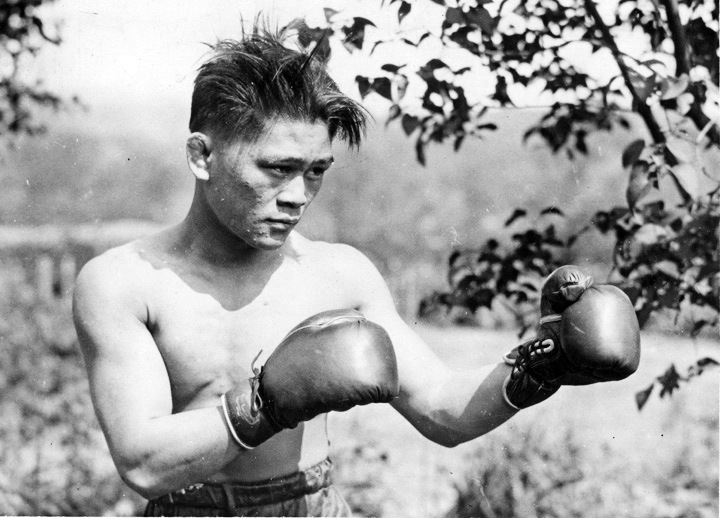
Most fascinating to me about Part Two is the rude intrusion of no fewer than four great flyweights into the bantamweight mix.
At first, I was surprised, and even a little alarmed by this, as though their grouping was part of some unconscious bias either for or against them, but in fact their bunching together like this makes sense. Each of these men did the most serious damage of his career down at flyweight and for a variety of reasons was limited as to the years he spent at the higher weight.
I have always thought of the leap from bantamweight to featherweight was physically the most difficult in old-school boxing, with flyweight to bantamweight a close second, so these men are to be admired for the mark they made at the poundage.
There was, after all, some stiff competition.
#40 – Alan Rudkin (1962-1972)
“It is widely believed,” states the Merseyside Former Boxers Association’s website, “that Alan Rudkin would have become a champion had any of his [title] fights been on home soil.”
This is not quite accurate, but you do know what they mean.
It’s unlikely that home soil would have made a lick of difference for his third and final tilt at the title against Ruben Olivares in December of 1969. As was his wont, Olivares obliterated the Brit, without difficulty and in less than two rounds. Rudkin did good work in the short time he remained a professional after this brutal destruction, but he would never again fight for the world championship.
Rudkin’s first title fight was a different matter. Back in 1965 he travelled to Japan for a meeting with perhaps the single greatest swarming boxer in history, Fighting Harada. In terms of territory and opposition, things could hardly be tougher.
Rudkin fought with all the desire of a man fleeing the Liverpool docks where his professional life might have taken him had he not been so blessed. He stayed right with Harada throughout. I have never seen so many arguable rounds in a fifteen round contest. In the end though, Harada was busier and a little quicker and that was enough. The MFA probably have an argument here though; there were so many tight rounds that a reasonable scorecard could probably be produced for the Englishman.
His second title fight came against the wonderful Lionel Rose out in Australia and he may have run the champion even closer on this occasion, staging a wonderful rally in the final rounds but dropping a split decision to the Australian fighter. I’m going to go ahead and guess that Rudkin would have received the nod in Liverpool.
But it was not to be. Such was Rudkin’s quality that he earned three title shots in his career. Such was his luck that he had to contest them with Harada, Rose and Olivares. The bantamweights who could have earned the championship in such circumstances can probably be counted on the fingers of one hand.
A victory over a handful of top contenders in combination with this hard luck story sees him crack the top 40.
#39 – Joe Bowker (1899-1919)
Joe Bowker, one of Britain’s best unheralded titlists, got his start in boxing at a time when gumshields were buried in the distant future and the gloves he wore to protect his hands were around the same weight as the ones you use when the weather is chilly. So let’s just agree that he was tough and move on.
But Bowker also reads as a brilliant pugilist. Harry Harris named him cleverer than even the famous “Box O Tricks”, Pedlar Palmer; when the two met, so it proved to be, the young Bowker tracking down and stopping his more senior peer in 1905 in twelve rounds up at featherweight.
This combination of toughs and smarts were what Bowker relied upon to bring him a version of the world title in 1903 when he crushed Al Fellows with a steady stream of abuse which culminated in a ninth round stoppage. He turned away a young Owen Moran the following year, proving himself the best bantamweight on these British Isles and after staging one more defense began his dalliance with featherweight.
He did return to the division in 1910 to become European champion, but a second claim for the world title was halted by Digger Stanley. Unquestionably the best of a very good crop of English bantams, Bowker never achieved true recognition as some less impressive fighters passed the true title between them over the Atlantic. Sadly, by the time Bowker visited America it was as a small featherweight rather than as an elite bantamweight.
#38 – Newsboy Brown (1921-1933)
The wonderful Newsboy Brown was born in Russia and arrived on American shores while still in his crib. LA became his base of operations for assaults on the flyweight, bantamweight and featherweight world titles.
At bantamweight, he met with limited success. He held no world championship, a feat he accomplished at flyweight, was served no title shot, a reward he was justly granted at featherweight, but he did beat a world champion, and one of the great ones.
An underdog, the smaller man, fouled throughout by a master of the dark arts, Newsboy Brown took the fight to Panama Al Brown in the tenth and final round of their 1931 non-title fight. It was enough to gain him the decision and to see him installed as the #1 contender to the title.
But Newsboy Brown let it all slip. Just forty days later he matched Young Tommy, an excellent bantamweight who he had previously defeated over ten in LA. In their second encounter, Brown was thrashed – some sources have him losing all ten rounds the two contested. It is tempting to accuse Panama Al Brown of ducking Newsboy, but it was easy for the champion to sidestep him given the depths of his performance against Tommy.
And therein lies the rub with Brown. He was inconsistent at the highest level, at flyweight and at bantamweight. He went 1-1 with Speedy Dado, he went 1-1 with Eugene Huat, and he went 1-1 with Tommy; the only ranked contender he proved himself the inarguable superior of was Archie Bell.
Scrappy, skilled, aggressive, with a fiery body attack, he could be found by quality opposition, and sometimes he stayed found.
#37 – Abe Goldstein (1916-1927)
Just like Newsboy, key to New Yorker Abe Goldstein’s legacy was a victory over Panama Al Brown. It is perhaps a little unfair to deduce too much as regards Brown as he was just another ranked fighter at this point in his career, yet to make his legend. On the other hand, Goldstein appeared washed up having won just three of his last ten and none of his last four.
So this was a delicious late-career rally. Out-reached by a taller, faster, longer fighter he nevertheless out-boxed him from distance, “fairly easily” according to the Brooklyn Eagle which also made a point of referring to him as “the handsome Abe Goldstein.”
Those matinee looks did Goldstein no harm but far more crucial was his skill as a sharpshooter. He was no runner, but closed with opponents and looked to out-pick them. The combination of his good looks, Jewish background and direct but cultured style made him something of a fan-favorite for a spell and catapulted him into a strange title shot on very short notice in 1923. Champion Joe Lynch was stripped of his crown when he pulled out of a fight with Joe Burman on the very day of the contest; Goldstein stepped in and put on a wonderful display of right-hand punching, whereupon he was awarded the decision and the title.
This raised a question: did Lynch remain the lineal champion, or should Goldstein now be recognized?
Goldstein did the right thing and at the beginning of 1924 matched Lynch, winning another fifteen round decision. He rode a bolt of lucky lightning in grasping fistic immortality but screwed down on his position in his first defense; two further defenses followed against strong opposition before Eddie Martin outpointed him at the Garden at which point Goldstein’s form dropped off a cliff – barring that wonderful victory over Brown.
Goldstein was clearly brilliant but was often criticized for perceived timidity. Certainly he failed to make the fight in his 1922 fight with Pancho Villa, a damaging fifteen round loss. Even in their first fight, earlier that same year, a win, there were question marks over his aggression and his stomach for a hard fight.
Still, his being 4-1 in legitimate world title fights guarantees the man Ray Arcel called “my first and favorite champion” a spot.
#36 – Rodolfo Martinez (1965-1979)
There are several Mexicans in this installment and there are also many fighters who were inconsistent at the highest level – capable of beating world class opposition but not consistently.
Rodolfo Martinez was both. And he never gave up.
He got his first tilt at the great bantamweight champion Rafael Herrera in 1971 when both were just ranked contenders. The fight was desperately close, ending in a majority decision for Herrera. A flash knockdown in the second was the difference between them but it was enough to send Herrera on the road to championship honours whilst Martinez continued to toil in a desperate pack of well matched contenders. Herrera gave his old foe a rematch in 1973 with title honors on the line. By this time, Herrera had summitted and although cut, bleeding from the nose, occasionally battered by his endlessly persistent countryman, he achieved victory over Martinez by way of twelfth round stoppage.
Still Martinez did not give up the chase, cornering his nemesis one more time in 1974. Herrera had by this time dropped his titles to Enrique Pinder and was, perhaps, past his absolute prime. Martinez took full advantage, scoring something of a controversial stoppage in the fourth. If there was an element of luck to this great victory, he had earned it.
Martinez collected scalps around his three fight war with Herrera, chief among them Kazuyoshi Kanazawa, the number four contender who he stopped in four rounds, and Venice Borkhorser, the formidable former flyweight kingpin with whom he shared a desperate fifteen round encounter in 1976.
One of many fighters to be completely unmanned by Carlos Zarate he bled out his best in that torrid fight. A beltholder rather than a true champion, he was one of the best contenders in one of the most heavily stacked bantamweight divisions in history.
#35- Jimmy Wilde (1911-1923)
It surprised me that Jimmy Wilde, “The Mighty Atom” is placed third of the four career flyweights that have gatecrashed the top forty at bantamweight, but Wilde’s pound-for-pound greatness is perhaps built more upon his tremendous surge from the modern minimumweight all the way to featherweight. That said, the little genius made a significant dent at bantamweight, too, most especially in 1919, Wilde’s peak year, when two all-time greats were imported from America to test him – madness, that Wilde even made these matches was madness – and he achieved decisions over both of them.
Joe Lynch went first, in March. The New Yorker was approaching his pomp, just six months away from a newspaper decision over Pete Herman. Members of the British Royal Family sat at ringside, royalty, too, in the ring, as the rain lashed down and Wilde, the smaller man by fifteen pounds and yet the aggressor, got home to win the narrowest of decisions.
Four months later, “Memphis” Pal Moore arrived on British shores. Wilde was “as a boy” next to the Tennessean and in the middle portion of their twenty round contest, disaster nearly struck, culminating in the sixteenth when it seemed he might fold. The Welshman rallied and battled through to a decision.
It is possible to find dissenting voices concerning both decisions. Against Lynch, Wilde may have benefited from the referee’s apparent distaste for the American’s tendency to hold. It is also probable that the chances of Wilde losing with the future British King ringside were minimal. Against “Memphis”, Wilde again seems to have benefited, this time from Moore’s hitting with the open glove, for which he was warned. It is possible that these decisions would have been reversed on US soil; my read, though, is that they were those kinds of fights – close and open to interpretation.
Taken in tandem with some decent British scalps, Wilde is good for his spot.
#34 – Enrique Pinder (1966-1973)
Enrique Pinder lost to several contenders but defeated two of the very finest bantamweights ever to grace the ring.
A sound if uninspiring collection of wins in 1971 and 1972 bought him a regional and national bantamweight championship and an unlikely shot at the title, held in 1972 by the wonderful Rafael Herrera. Herrera had taken the title from none other than the immortal Ruben Olivares just four months earlier and was on a ten fight winning streak that had also included the likes of Chucho Castillo and Rodolfo Martinez. To say Pinder was rated an underdog is an understatement.
The Panamanian defied the odds and lifted the true bantamweight championship of the world in a fifteen round decision over one the finest exponents of boxing at the weight. A quick and powerful stylist, his hard punches discouraged aggression and his speed, though not prohibitive, was enough to see him take the title from the ageing champion.
Pinder would drop that title in devastating fashion in his first defense against Romeo Anaya; but before he did, he fought a non-title fight with the immortal Chucho Castillo. Castillo had also defeated Olivares, turning the trick in 1970, and although he had lost the rematch he was not yet far removed from his prime. Pinder once again utilized a sprightly left hand and quick feet to take a ten round decision by the narrowest of margins.
The ninth round, a disastrous one for the Panamanian, was survived by guile and heart and Pinder had a pair of wins that perhaps only Olivares and Castillo and Harrera themselves could match.
Sadly, he added nothing more of note, burning with a bright savagery in the early seventies before toppling of a cliff and into fistic oblivion, leaving us to wonder quite what to make of so mercurial a fighter. #34 is where he has washed up.
#33 – Pancho Villa (1919-1925)
Pancho Villa (pictured) knocked out Jimmy Wilde at flyweight in 1923 and immediately packed up his terrifying combination of speed, power and aggression and invaded the bantamweight division. Like a poker player holding a middle pair he set out to find out exactly what the other players at this new table had with a big bet, boxing the monstrous Kid Williams. Williams was past his best but still a livid nightmare for a fighter moving up. The headline for the wire report, “Pancho Villa Easily Defeats Kid Williams” was as clear a warning bell as could be sounded for the division.
Villa, never anything but fearless, then lined up Bud Taylor and the two boxed a no-decision in September; Villa won almost every round and presented himself ring-center at the beginning of the ninth to out-punch the bigger man toe-to-toe. It was an impressive performance, but early in 1924, Taylor avenged himself. He had won the fifth round of the first fight using his left jab and hook. These were the punches that brought him vengeance.
So the two fought a rubber match in June, in a decision bout where an official victor would be named. Villa triumphed, and in doing so had earned himself a trilogy win over a legitimately great bantamweight. Speculation mounted that he would depart the flyweight division for bantamweight permanently; a year later the fearless Filipino, not yet twenty-four years old, would be dead.
Had Villa lived we would likely be talking about a top thirty bantamweight. He was that special. As it was, the key victories over Taylor and Williams are barracked by a split pair against the excellent Abe Goldstein, and the gathering of some lesser contenders, Young Montreal and Abe Friedman among them.
#32 – Midget Wolgast (1925-1940)
Midget Wolgast had the face of a killer and the boxing style of a fallen angel. There has quite possibly never been a more fascinating fighter in all of boxing’s rich history.
He was also one of those men with an attitude that brought glory and suffering in equal portions, that rarest and most beautiful of pugilists, a man who would fight anybody. This led to his building a very, very respectable bantamweight ledger. His ludicrous, lashing, dancing style probably allowed him to get away with making matches that would have sent most flyweights spinning sideways.
Included are two men from this list, namely Pete Sanstol, who he befuddled, back-handed, and dominated in 1933, by then approaching the end of his prime, and Lou Salica.
Salica, who we haven’t met yet, was just as green as grass when Wolgast put a terrible hurting on him over eight one-sided rounds in 1934. Interestingly, the two fought a rematch three months later and Salica earned a draw, in the main due to a persuasive body attack. This paved the way for Wolgast’s only shot at a strap, his 1935 rubber match with Salica. Their fight was close, but the naturally bigger man dropped and harried Wolgast in the sixth round and took a decision over ten.
So no title for Wolgast, but he did best a slew of good bantamweights, from title challenger Archie Bell to the excellent contender Young Tommy with whom he took the heavy end of a trilogy; Speedy Dado, Ernie Maurer, Lew Farber and Bobby Leithman round out a resume as strong as anyone in this entry.
#31 – Robert Cohen (1951-1959)
Robert Cohen wore the perma-scowl of a 1950s Hollywood villain and the physique of a Greek God. Needless to say, although he was originally from Algeria, he was popular in his adopted home of France. The crowds got even bigger when he took his show on the road; 20,000 saw him knock European bantamweight champion John Kelly, one of the most respected contenders in the world, brutally unconscious in Belfast. That was 1954. By this time Cohen had already established himself as the foremost bantamweight contender of the decade, having twice defeated his only true rival for the hearts of French at the poundage, world number two Maurice Sandeyron. His pull in the wake of these results was such that French promoters were able to tempt one of the top American’s of that time, Henry Gault, out to Paris; he did not do better than Sandeyron.
After stopping Kelly, Cohen was ready for his shot at champion Jimmy Carruthers. Carruthers, though, retired, leaving Cohen to contest the new lineage with two other outstanding contenders, Thai hero Chamrooen Songkitrat and the wonderful Italian, Mario D’Agata.
These three were so closely matched that an overall victor seemed unlikely, but that is what boxing got in the shape of Robert Cohen. He bested D’Agata out in Tunisia over ten rounds in a desperate fight that saw Cohen drop his man in the penultimate round to squeak home with a narrow and unpopular decision; then he traveled to Thailand where he and Songkitrat put on an equally trying and close contest, that saw both men injured in a bitter contest in which Cohen took the split.
Cohen was not a great champion, posting a draw out in South Africa before losing the title to Cherif Hamia back in Paris, but he was an exceptional contender and one who built a genuinely impressive resume on his way to the title. Sadly, bantamweights who twice beat the best fighter in the world excepting themselves are extremely rare and Cohen, given the date of Carruthers’ final fight, is one of them.
It enhances his standing and brings him to the very precipice of the top thirty.
Next week we arrive at the very precipice of the top twenty.
Check out more boxing news on video at The Boxing Channel
-

 Featured Articles3 weeks ago
Featured Articles3 weeks agoAvila Perspective, Chap. 330: Matchroom in New York plus the Latest on Canelo-Crawford
-

 Featured Articles1 week ago
Featured Articles1 week agoVito Mielnicki Jr Whitewashes Kamil Gardzielik Before the Home Folks in Newark
-

 Featured Articles4 weeks ago
Featured Articles4 weeks agoAvila Perspective, Chap 329: Pacquiao is Back, Fabio in England and More
-

 Featured Articles3 weeks ago
Featured Articles3 weeks agoOpetaia and Nakatani Crush Overmatched Foes, Capping Off a Wild Boxing Weekend
-

 Featured Articles2 weeks ago
Featured Articles2 weeks agoCatching Up with Clay Moyle Who Talks About His Massive Collection of Boxing Books
-

 Featured Articles3 weeks ago
Featured Articles3 weeks agoFabio Wardley Comes from Behind to KO Justis Huni
-

 Featured Articles1 week ago
Featured Articles1 week agoMore Medals for Hawaii’s Patricio Family at the USA Boxing Summer Festival
-

 Featured Articles4 weeks ago
Featured Articles4 weeks agoDelving into ‘Hoopla’ with Notes on Books by George Plimpton and Joyce Carol Oates

